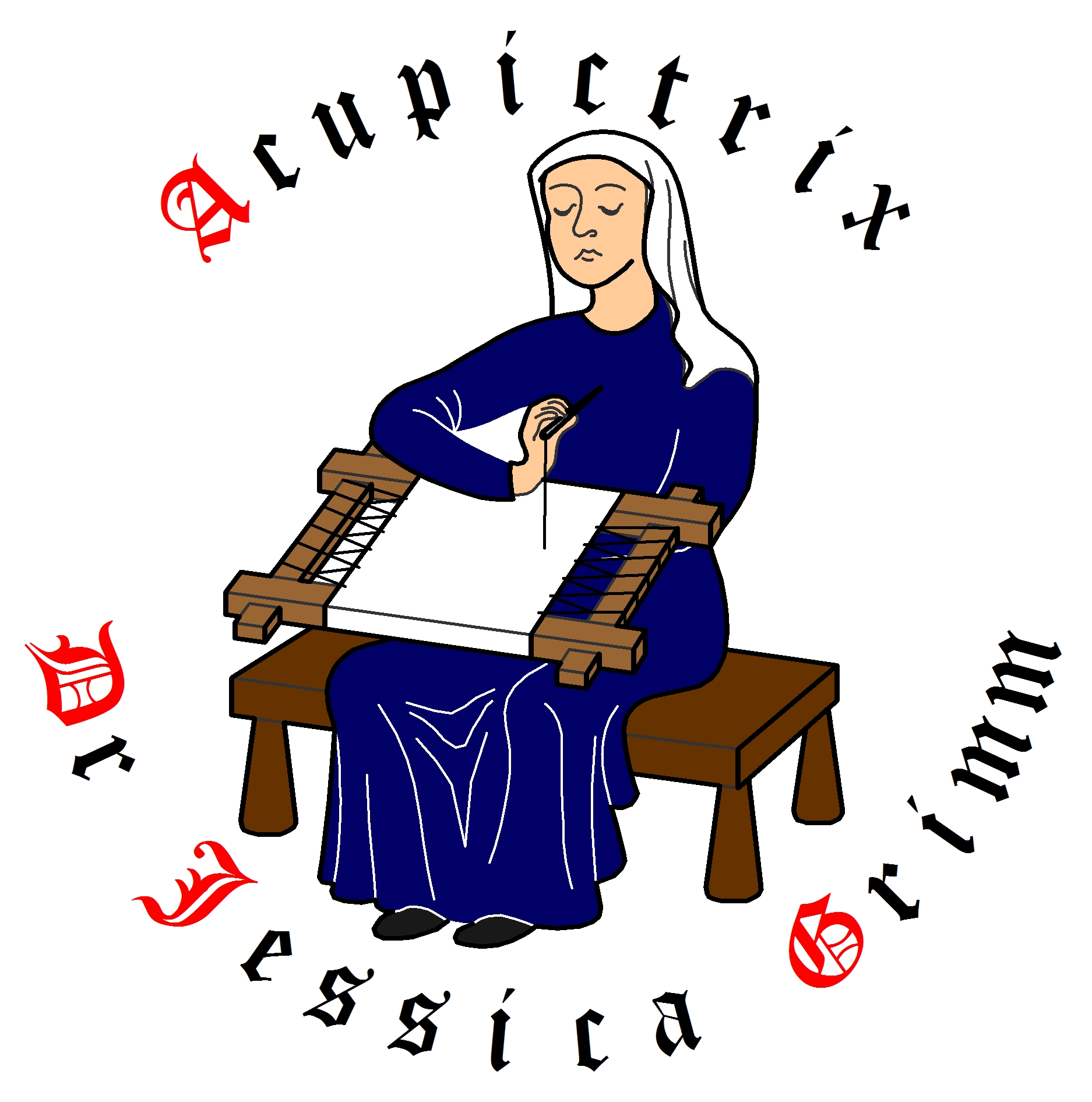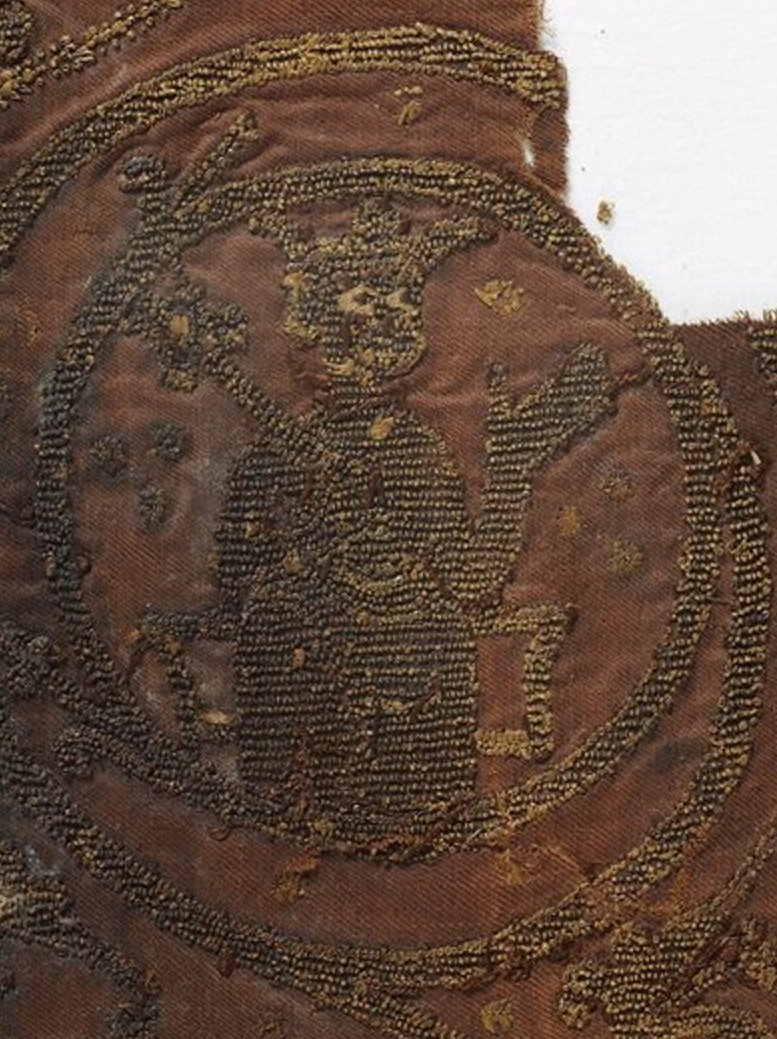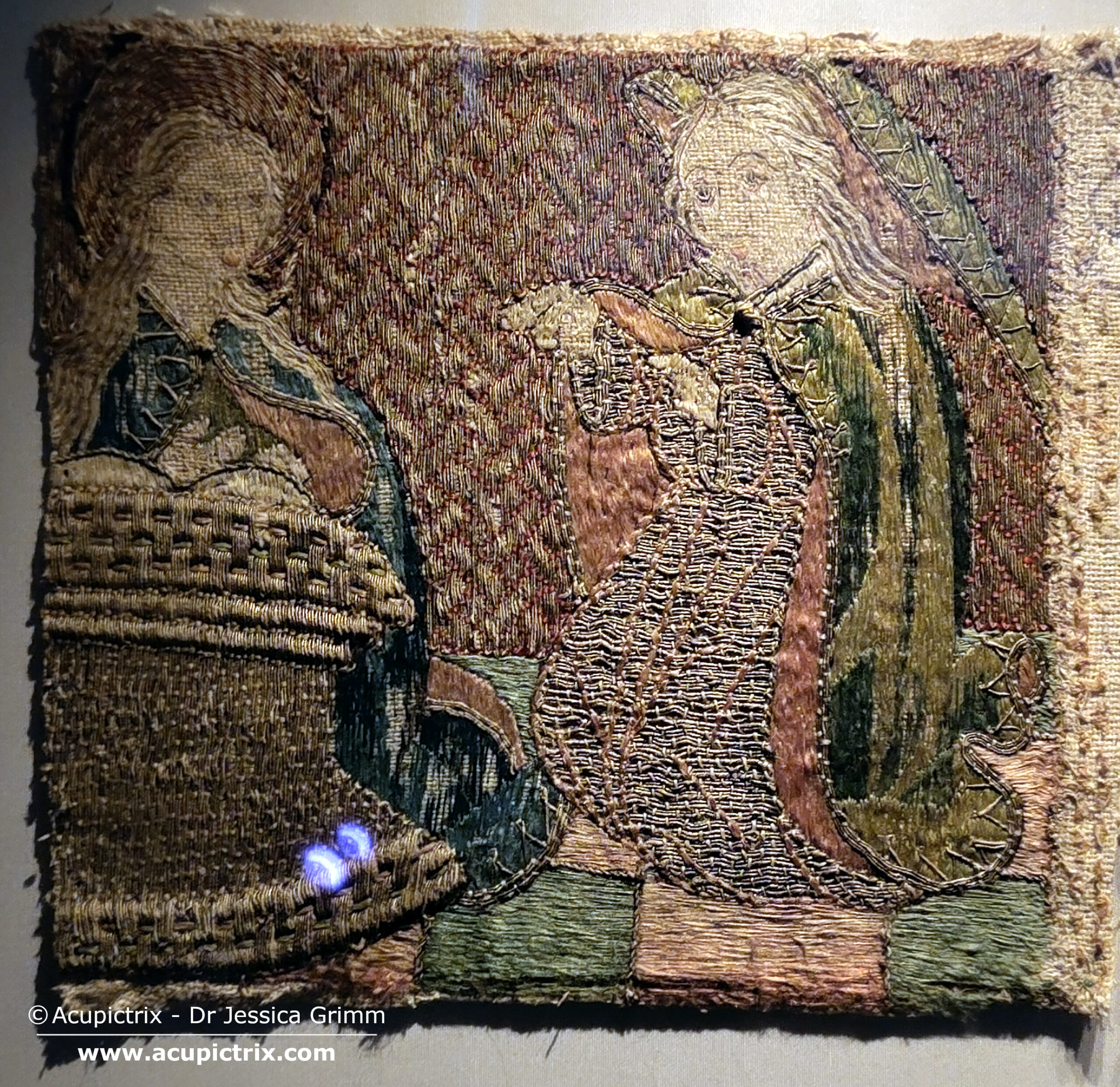Your basket is currently empty!
Category: Period
-
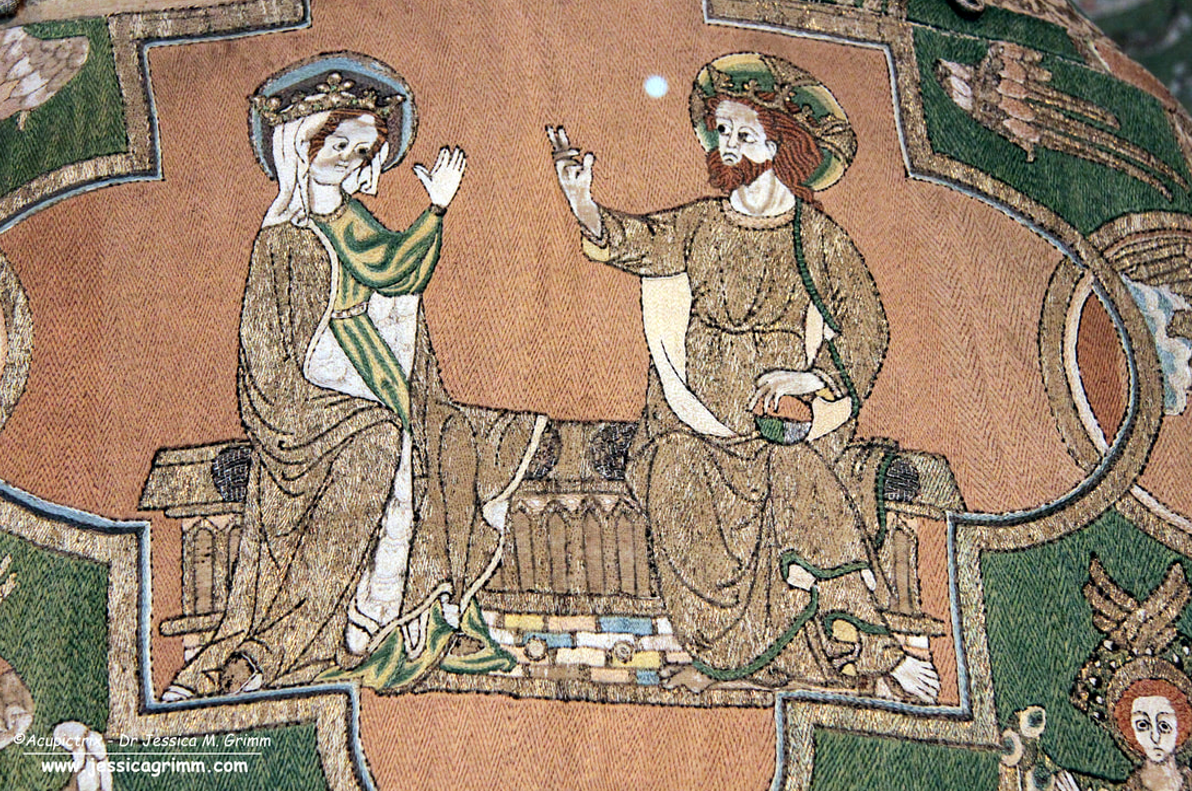
While researching the grave finds of some of these bishops and kings, I also came across other small embroidered pieces that piqued my curiosity. When we think of Opus anglicanum, we think of underside couched gold threads. However, the embroiderers also underside couched silk. The most famous example is the Syon cope. The background consists entirely of…
-
When I was updating my database on medieval goldwork embroidery, I came across beautifully embroidered ceremonial stockings. The use of these stockings ended after the Second Vatican Council in 1962. Bishops, but also some male nobility, were laid to rest in them. They are often the best-preserved part of the funeral clothing due to the…
-
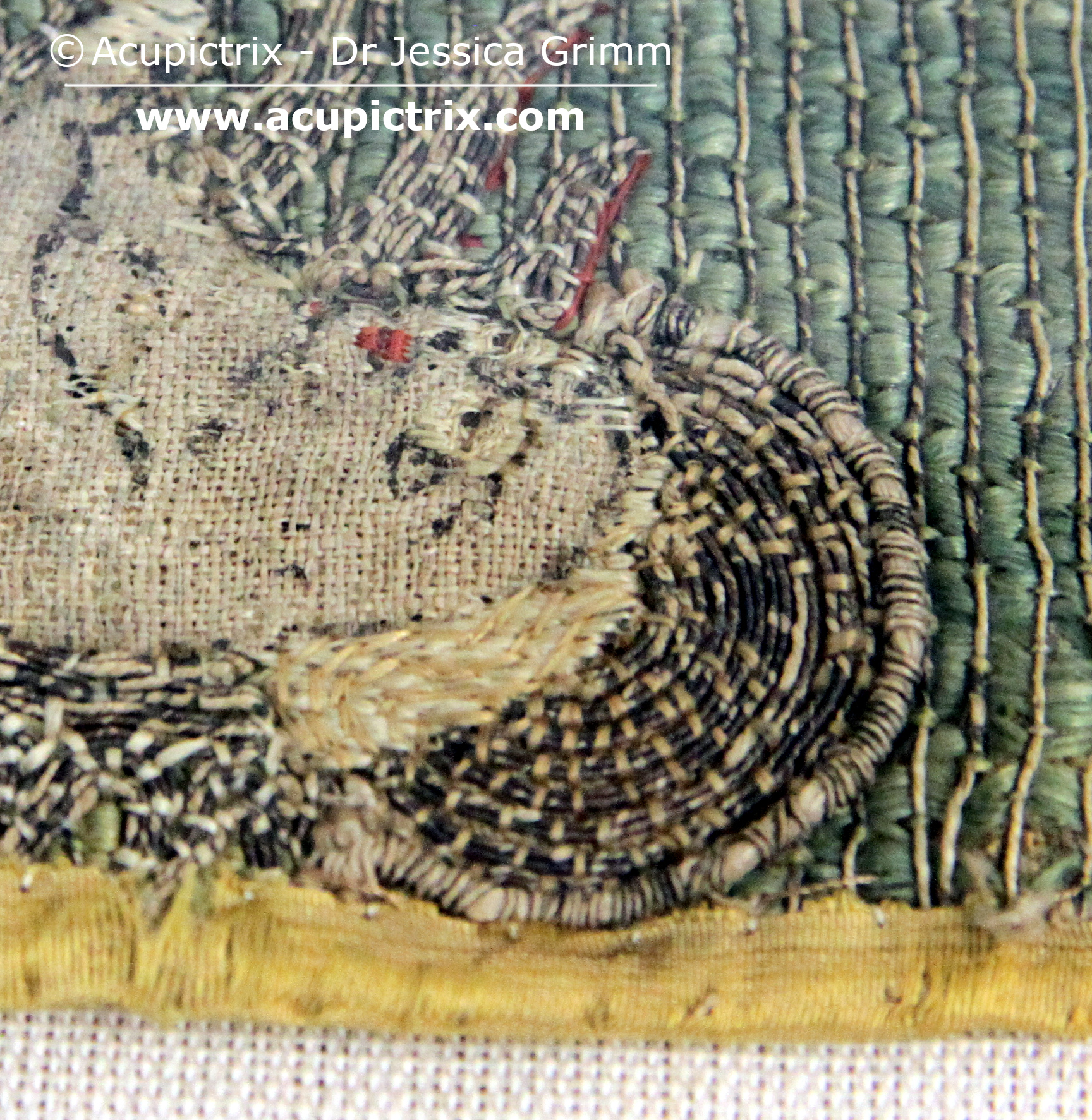
German medieval embroideries are often characterised by a composite thread not seen elsewhere: gold gimp. This is a relatively thick piece of string wrapped with a thin thread of membrane gold (gilt animal gut wrapped around a linen core). Was this a ready-made thread? Did the embroiderers make the thread themselves? Is it either pre-made or made…
-
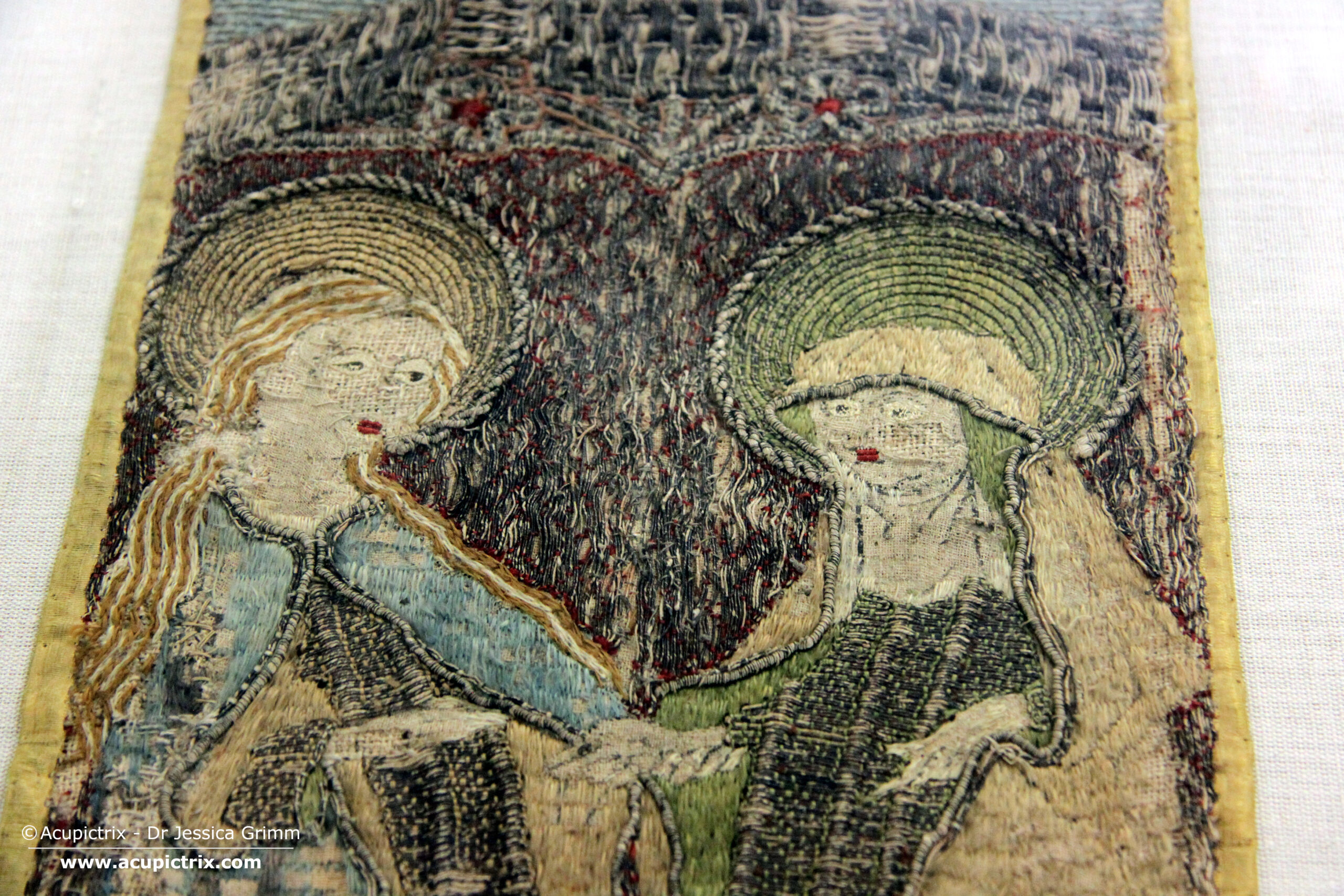
Last week, Sabine Ullrich, curator of the Kulturhistorisches Museum Magdeburg, invited me to view a chasuble cross in storage. To my delight, Sabine came up with a few additional pieces for me to study. While there are currently no medieval embroideries on display in the museum, textile enthusiasts should visit as there are beautiful late-medieval and 16th-century tapestries on permanent display.…
-
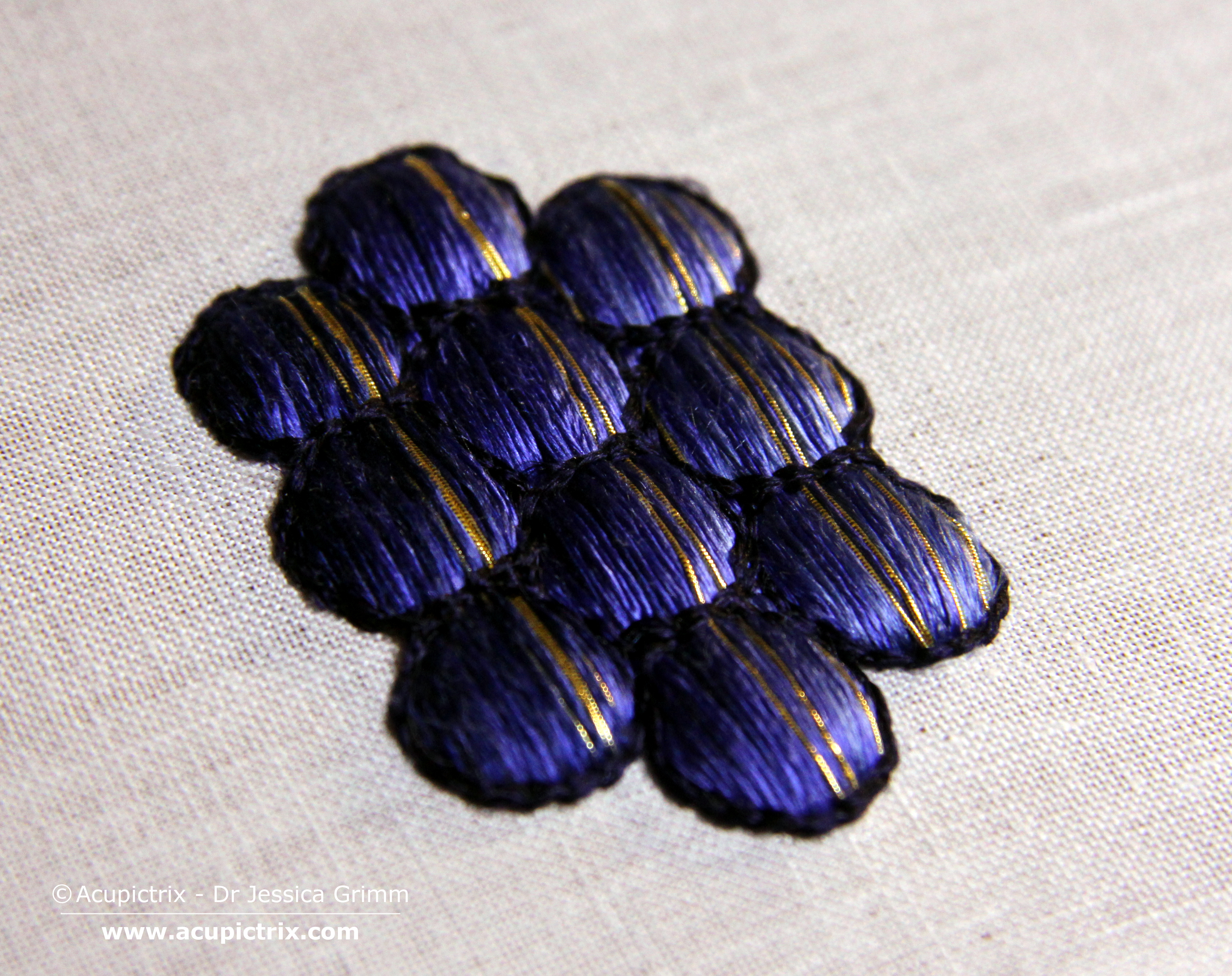
Professional embroidery is very different from hobby embroidery. Sometimes, hobbyists remark that the back of my embroidery isn’t very neat. For some, a neat back is the hallmark of excellent embroidery. It makes sense to have a neat back when the embroidery can be viewed from both sides. But when that’s not the case, there…
-
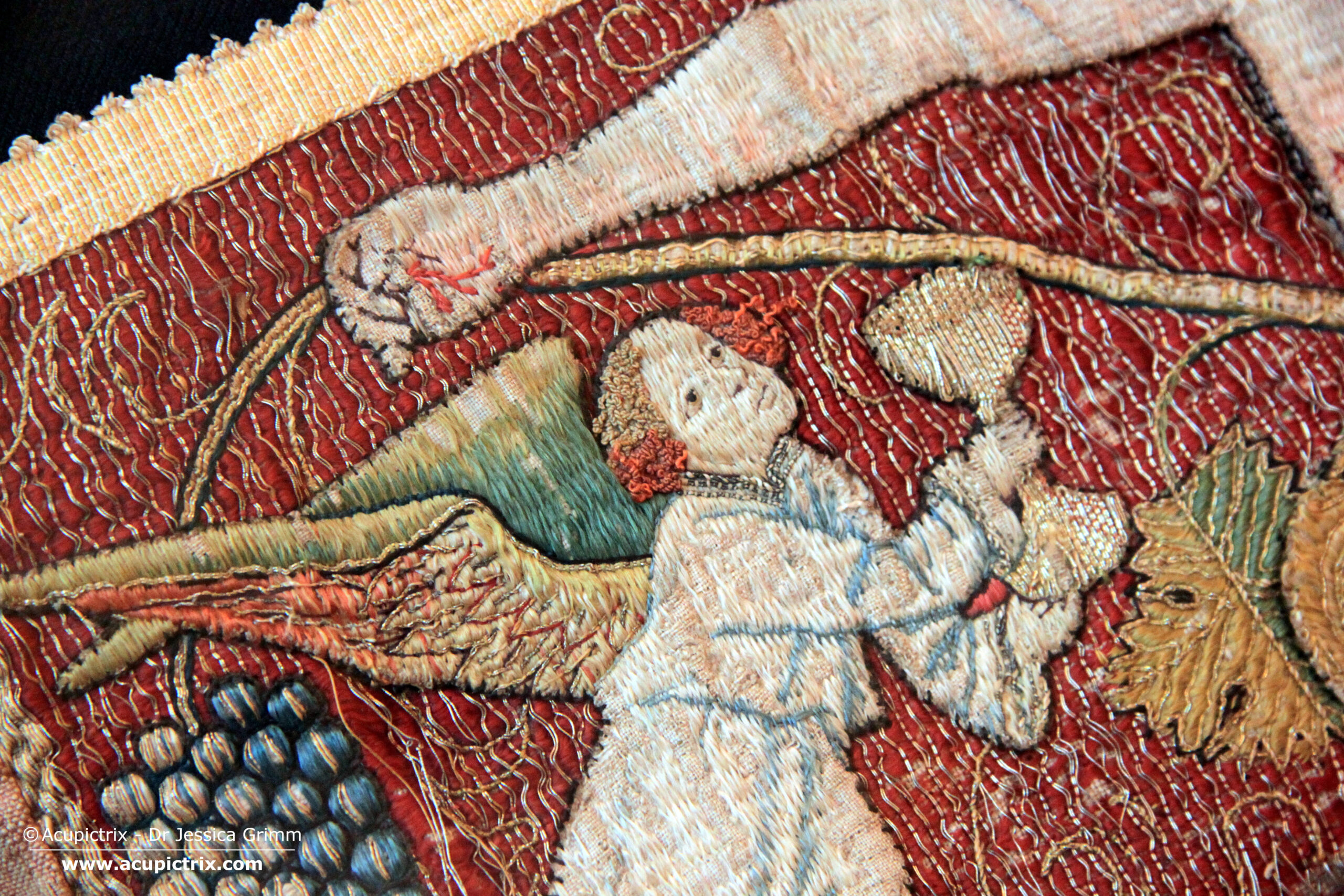
Let’s delve into the fascinating world of a unique embroidery crafted around AD 1500 in the Middle Rhine Area. This medieval embroidery masterpiece, housed at the Dommuseum Mainz, is a testament to local artistry. Its iconography is truly one-of-a-kind. It’s reminiscent of the whimsical art photographs by Anne Geddes, but instead of babies nestled in foliage, we…
-
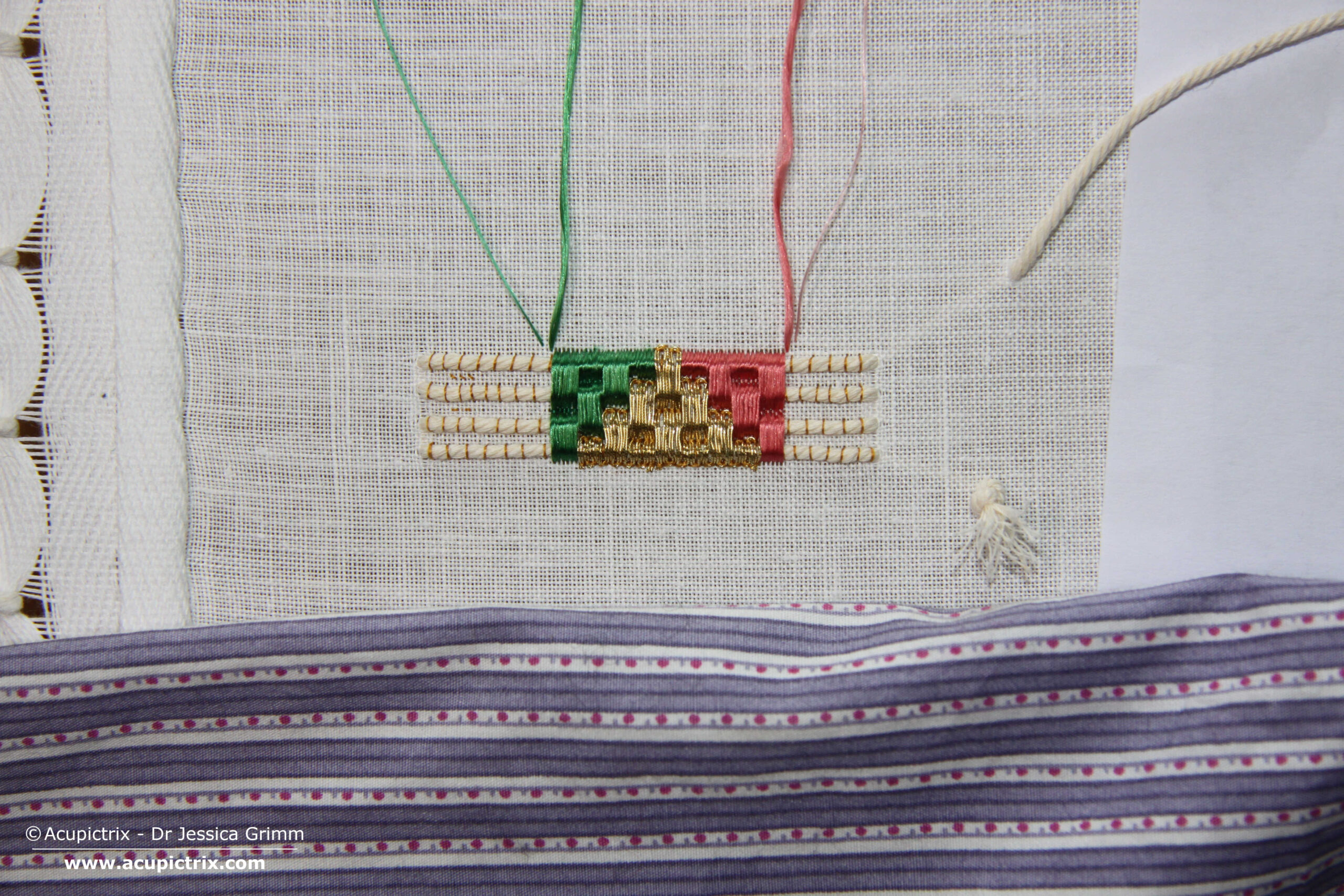
This week, I have a goldwork embroidery tutorial for you inspired by a late 15th-century embroidered chasuble kept in the Domschatz of Fritzlar. It has these lovely textured bands or borders between the individual orphreys. The border is made by couching gold threads and coloured silks over string padding. It seems to be a very…
